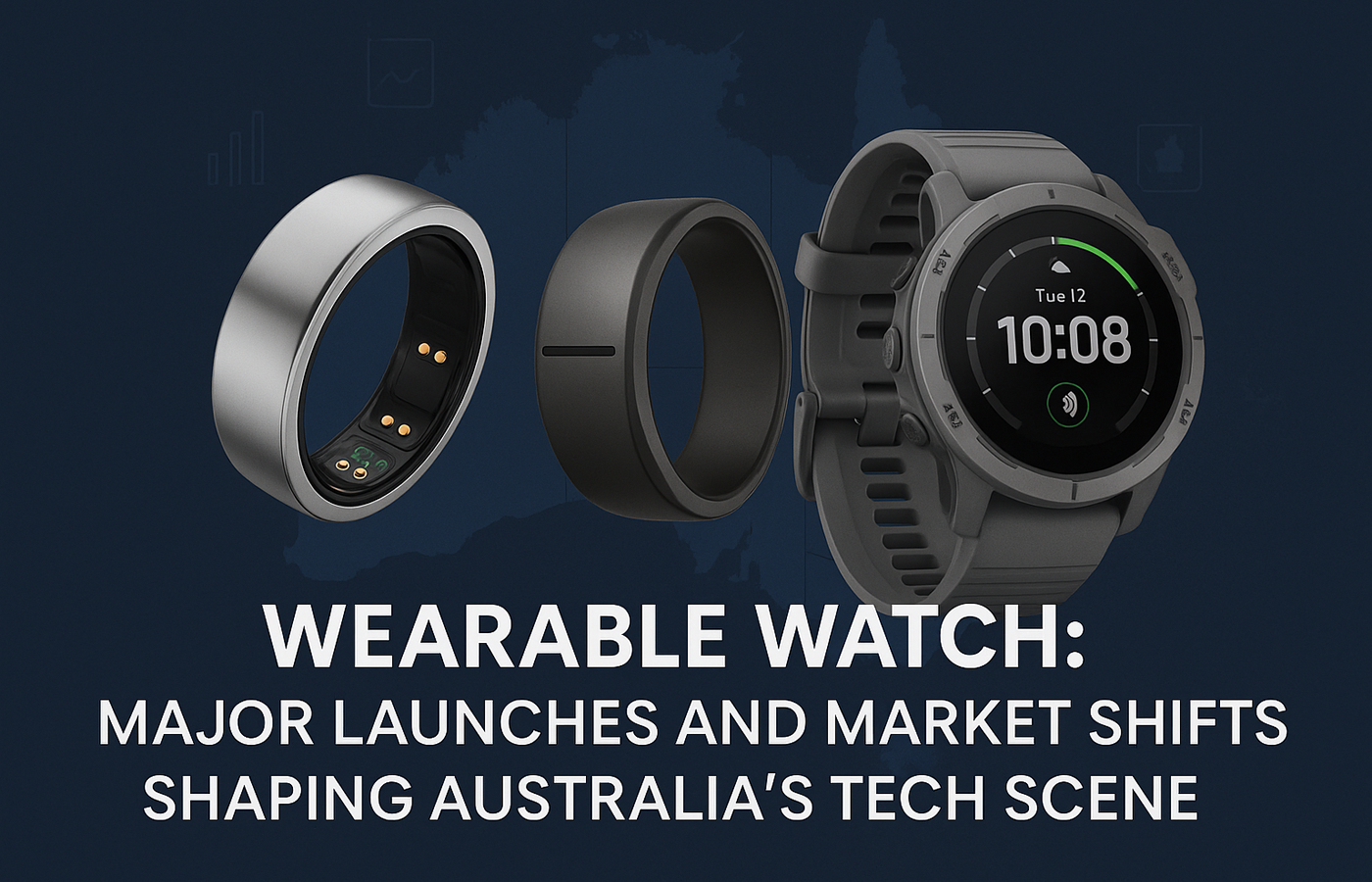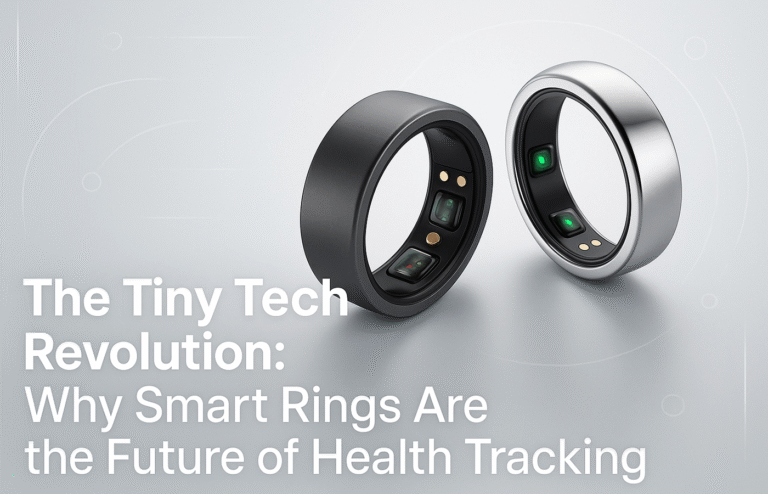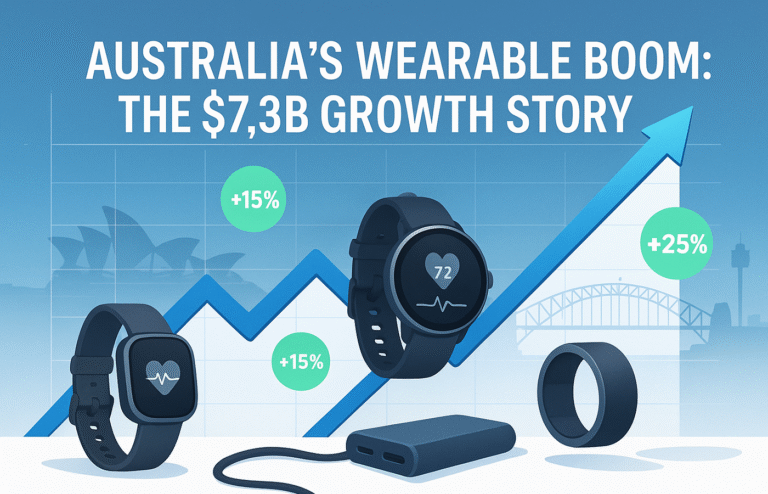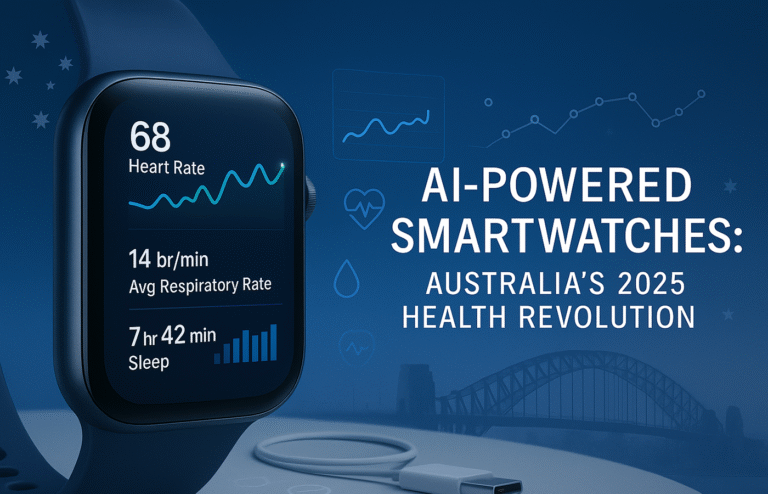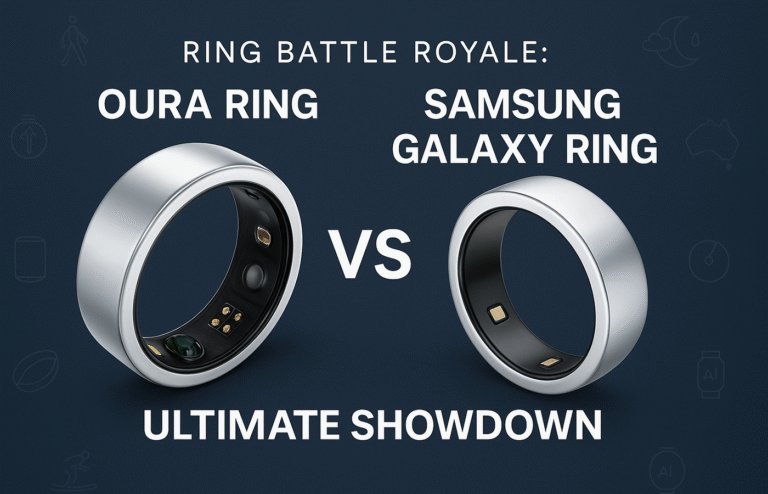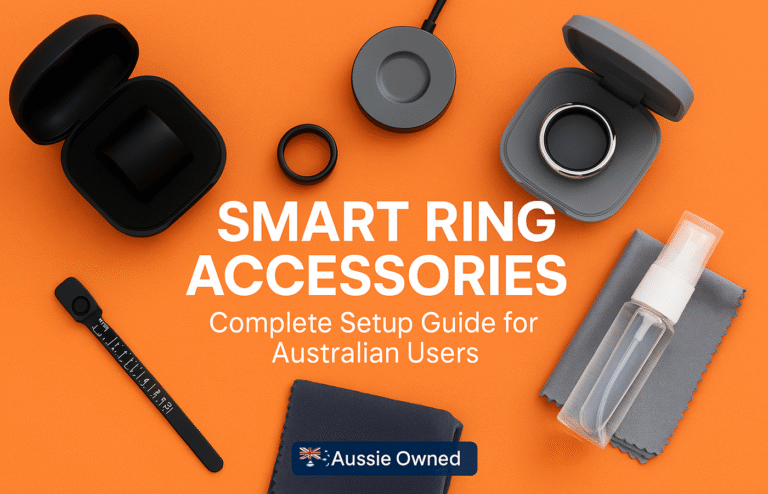Wearable Watch: Major Launches and Market Shifts Shaping Australia’s Tech Scene
Australia’s wearable device landscape has experienced remarkable transformation over recent months, with major manufacturers introducing groundbreaking products while others refine their market strategies. From Samsung’s historic smart ring debut to Garmin’s rugged innovation and Apple’s continued dominance, the local market reflects global trends while addressing uniquely Australian consumer needs.
This quarterly update examines the most significant product launches, feature updates, and market developments affecting Australian wearable enthusiasts. Moreover, we’ll explore how these changes impact consumers and what they signal for the industry’s future direction.
Samsung’s Australian Smart Ring Revolution
Samsung Galaxy Ring has officially launched in Australia with considerable fanfare, marking a pivotal moment for the local wearable market. The Galaxy Ring is $699 RRP and available exclusively at Samsung.com.au and Samsung Experience Stores, positioning Samsung as the first major manufacturer to bring flagship smart ring technology to Australian consumers.
The launch strategy demonstrates Samsung’s confidence in the Australian market, with Australia is the first country in the South-East Asia and Oceania region to release Samsung’s latest wearable technology. This premium positioning reflects both the device’s advanced capabilities and Samsung’s commitment to the local market.
Unique Australian features include a generous 30-day satisfaction guarantee exclusive to the Australian market. Australia is the only market Samsung has launched this offer in, providing consumers unprecedented confidence when purchasing their first smart ring. This policy acknowledges the unique challenge of sizing wearable technology and demonstrates Samsung’s understanding of Australian consumer protection expectations.
The Galaxy Ring’s Australian launch includes comprehensive local support through Samsung’s established retail network, addressing one of the key barriers that prevented many Australians from accessing imported smart ring alternatives. Additionally, the device’s integration with Samsung Health provides localised health insights that consider Australian lifestyle patterns and healthcare recommendations.
Garmin’s Rugged Innovation Continues
Garmin Instinct 3 Series represents the company’s most significant update to its popular rugged smartwatch line. Available to order on Garmin.com from early 2025, Instinct 3 AMOLED models have recommended retail prices starting at $829.00 while the solar charging models start at $729.00, bringing premium display technology to Garmin’s most affordable outdoor-focused range.
The introduction of AMOLED displays alongside traditional solar-powered options provides Australian consumers with genuine choice between battery life and visual appeal. The AMOLED models get up to 24 days on a single charge in smartwatch mode while the solar charging models can get unlimited battery life, addressing the diverse needs of Australia’s outdoor enthusiasts.
Australian-specific benefits include enhanced solar efficiency particularly valuable in Australia’s high-UV environment. The improved solar lens technology means users in sunny conditions can achieve virtually unlimited battery life, making these devices ideal for extended outback adventures, mining operations, and outdoor work environments common across Australia.
The addition of built-in LED flashlights across all models provides practical utility for Australian users who frequently work or exercise in low-light conditions. This feature, combined with the device’s MIL-STD 810 certification, makes the Instinct 3 particularly appealing to Australia’s mining, agriculture, and emergency services sectors.
Garmin Instinct 3 Tactical Edition followed in April with specialized features for military and first responder applications. The Instinct 3 – Tactical Edition AMOLED model has a recommended retail price of $1,099.00 AUD while the solar charging models start at $929.00 AUD, including advanced features like night vision compatibility and rucking activity profiles.
Apple’s Continued Market Leadership
While Apple didn’t release entirely new Watch models during this period, the Apple Watch Series 10 continued its strong Australian market performance with Apple Watch Series 10 starts at RRP A$649 inc. GST. The company has maintained its pricing strategy while offering enhanced trade-in values to encourage upgrades.
Apple’s focus has shifted toward software innovation and health feature expansion. The latest watchOS updates have introduced enhanced sleep tracking capabilities, improved workout detection, and better integration with Australian healthcare providers through HealthKit compatibility.
Australian market advantages include seamless integration with the local banking ecosystem through Apple Pay, supporting major Australian financial institutions and transport systems. The Apple Watch’s emergency features have been optimised for Australian conditions, including enhanced GPS accuracy in remote areas and improved emergency calling capabilities that work with local emergency services.
The company’s decision to maintain competitive pricing while offering substantial trade-in credits demonstrates its commitment to maintaining market leadership in Australia’s premium wearable segment.
Software Updates and Feature Enhancements
Beyond hardware launches, significant software updates have enhanced existing devices across all major platforms. Samsung Health has introduced new Australian-specific health insights, including seasonal adjustment recommendations and local air quality integration for major cities.
Garmin Connect updates have improved route planning for Australian conditions, with enhanced heat management recommendations and better integration with Bureau of Meteorology data. These features prove particularly valuable during Australia’s extreme weather seasons.
Apple Health has expanded its integration with Australian healthcare providers, enabling easier sharing of health data with medical professionals and better support for Australia’s My Health Record system.
Market Impact and Competitive Responses
The smart ring category’s introduction has prompted interesting competitive responses. Traditional fitness tracker manufacturers are reassessing their product strategies, while established smartwatch brands are exploring complementary form factors rather than direct competition.
Pricing pressures have emerged as international brands compete more aggressively for Australian market share. Premium features are increasingly appearing in mid-range devices, benefiting consumers but challenging manufacturer profit margins.
Local retail partnerships have expanded significantly, with major electronics retailers like JB Hi-Fi and Harvey Norman increasing their wearable floor space and demonstrating greater commitment to staff training and customer education.
Australian Consumer Behaviour Shifts
Recent market data reveals evolving consumer preferences that differ from global trends. Australian consumers show stronger preference for devices with extended battery life, reflecting the country’s outdoor lifestyle and remote work requirements.
Health monitoring priorities align with local health challenges, including enhanced UV exposure tracking and heat stress monitoring capabilities. These features resonate particularly well with Australian consumers who face unique environmental health risks.
Payment integration has become a critical factor in purchase decisions, with contactless payment capability now considered essential rather than optional for most Australian wearable buyers.
Carrier and Partnership Developments
Telstra has expanded its wearable device support, offering improved data plans for cellular-enabled smartwatches and enhanced coverage optimisation for wearable-specific use cases. This development addresses one of the key barriers to adopting cellular wearables in Australia’s vast geographic area.
Healthcare partnerships have grown significantly, with several private health insurers now offering wearable device incentives and discounts. These programs recognise the potential for wearables to support preventive healthcare and reduce long-term medical costs.
Enterprise adoption has accelerated, particularly in mining and construction sectors where wearables provide safety monitoring and communication capabilities in challenging environments.
Supply Chain and Availability Updates
Global supply chain improvements have positively impacted Australian wearable availability, with most major launches now featuring simultaneous or near-simultaneous Australian releases. This development reduces the grey market pressure that previously affected local retailers.
Shipping and delivery times have improved significantly, with major manufacturers establishing or expanding Australian distribution centres. Samsung’s Galaxy Ring, for example, ships from local facilities rather than requiring international shipping.
Local service and support capabilities have expanded across all major brands, with authorised service centres now available in most major cities and improved mail-in repair programs for regional customers.
Looking Ahead: Trends and Implications
The current product cycle suggests several important trends for Australian consumers. Premium features are becoming more accessible across price points, while specialised devices for specific use cases are gaining market traction.
Health monitoring sophistication continues advancing, with new sensors and AI-powered insights becoming standard rather than premium features. This evolution particularly benefits Australian consumers given the country’s focus on preventive healthcare.
Environmental adaptation has become a key differentiator, with manufacturers increasingly considering Australia’s unique climate and lifestyle requirements when developing features and optimising performance.
The Australian wearable market’s maturation reflects both global trends and local preferences, creating opportunities for consumers while challenging manufacturers to differentiate their offerings. As the market continues evolving, Australian consumers benefit from increased choice, improved features, and better local support across all major wearable categories.
This quarter’s launches and updates demonstrate that Australia remains a priority market for global wearable manufacturers, ensuring continued access to cutting-edge technology while maintaining the local support and service standards Australian consumers expect.
